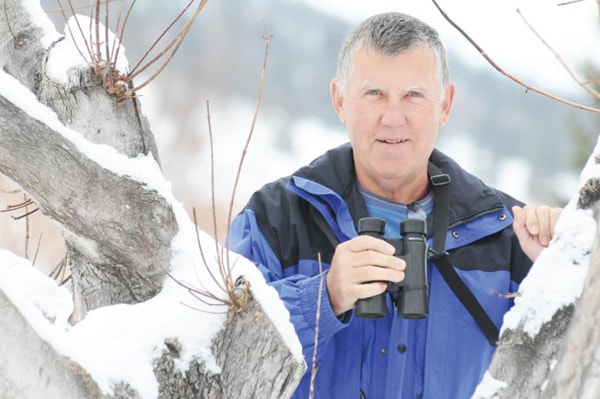The South Okanagan is home to many hidden treasures, from the plants and animals populating unique ecosystems to the geology around them.
But there are many treasures that are not native to the area, like the people that have chosen to make their home here.
“You get quite the diversity of people here,” said Bob Handfield, past-president of the South Okanagan Naturalists’ Club. “The observatory brings in astronomers, some of whom end up retiring here. I am one of a few geologists here. There are biologists, there are painters and poets, there is really an incredible mix of people here, which adds to life in the Okanagan.”
Handfield often writes and speaks about the unique natural aspects of the area, including, naturally enough for a retired geologist, the geology. And, when it comes to geology, Handfield brings some unique credentials of his own to the table.
It all started during his under-grad years at UBC, meeting some of his professors who had done their graduate studies at Princeton. That was reinforced when he went to work for the Geological Study of Canada as a summer student.
“A number of their people were Princeton graduates. It was a pretty impressive place to go, and I was fortunate enough to get a scholarship to go there,” he said. And while he was at Princeton, he managed to land a year-long travel fellowship, which took him to the Sorbonne in Paris.
“While I was there, I got a travel fellowship for a year. At the time, the particular field of geology I was working in, most of the experts in that field were in France and Russia,” said Handfield, who was studying paleontology at the time.
That, in turn, led Handfield to Russia. In 1968, still in the midst of the Cold War, Handfield became the first western scientist to be invited to a remote geological institute.
“Not one of the first to be invited to Russia in general, but to this particular geological institute out in the middle of Siberia, where, in those days of the Cold War, they didn’t allow many people to go,” he said.
Handfield likens it to finding a big city plunked down out in the middle of the Northwest Territories.
“Why they picked that part of Siberia to do that, I have no idea. If you can imagine a city as big as Kelowna or perhaps bigger, out in the middle of the NWT, a six-hour flight from anywhere,” he said, adding that there were several different academic institutes there besides the geology institute including a mathematics institute.
After graduate school, Handfield ended up teaching university in North Carolina for six years and decided that wasn’t the way he wanted to spend his life, switching instead to work in the mining industry for the rest of his career.
Though the geology of the Okanagan is interesting, Handfield said that had nothing to do with how he chose to retire here after travelling to some very unique parts of the world for his education and career.
Handfield and his wife were living in North Vancouver when his job transferred him to Australia. After spending seven years in Australia, they came home to retire and began to think about where they would like to live.
“There was too much rain on the coast. It was really a combination of the climate and a nice spot to be. Since I came here, I’ve found many other reasons for wanting to live here,” said Handfield.
The geology, according to Handfield, is linked to how the Okanagan became such a diverse habitat.
What makes B.C.’s geology, as a whole, different from the rest of Canada’s is that B.C. is very complex compared to most of Canada, Handfield explained. And the complex geology has led to diverse ecosystems as well.
“Because this valley is one of the few places in Canada connected to the Great Basin Desert to the south of us, we get a very diverse ecosystem here. It just leads to a very interesting place environmentally,” he said. “The South Okanagan would constitute, land area wise, about 0.1 per cent of the land area of Canada. And we have more than 10 per cent of the endangered species in Canada. So, that is a pretty lopsided relationship.”
But, Handfield reiterates, the geology was not what first drew him to the Okanagan.
“It seemed like a nice place to live and had a climate that was more of what we were looking for. I wanted to get away from really cold winters or really wet,” he said. “Someone has to like it I guess, but I don’t have to.”
